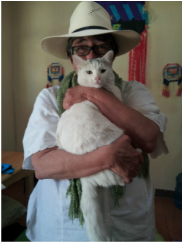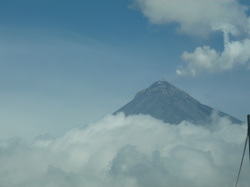
It was my first view of one of Guatemala’s three active volcanos, Pacaya. With smoke rising from her peak, she was easy to follow among the neighboring mountains which dominated the first hour of our journey. As we got closer to the coast, we passed many trellised loofa plants, the long green loofa hanging below the yellow flowers of the plant. The loofas are hung to dry ibefore they’re eventually sold for use in scrubbing the skin.
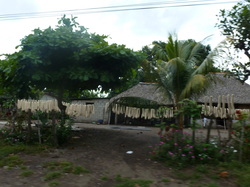
Selene and Catarina had warned me that the two hour beach walk would be “difficult,” though Selene was willing to do it again, having persuaded Eleazar to let her come along a second time for free. I was certain I would get soaking wet as the sky was heavy with clouds. In the distance, lightening would illuminate the ocean. The next night I would sit in a chair on the sand and watch the sky for two hours, as the streaks of lightening shot into the ocean and others crossed the sky horizontally like arrows.
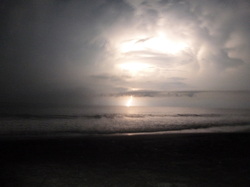
In the past, they would have sold the eggs as food. Considered a delicacy, sea turtle eggs are believed to be aphrodesiacs. In addition, dogs and beach vehicles take a considerable toll on the eggs. Now that sea turtles are an endangered species in Guatemala, the tortugarias which line the coast pay local residents to sell the eggs to their reserves, where they are reburied in a protected area. The babys are released closer to the sea to protect them from the perilous journey on the beach. Even with this additional protection from predators, it is estimated that only 1 in 100 to 1 in 1000 baby sea turtles survive into adulthood.
As we walked, moving away from the lights of the hotels and houses, I began to realize that finding a lone turtles as she made her joumey from the sea to make a nest was an improbable trek. It was possible that as we walked onward, a sea turtle had come out of the water behind us. Or that she might wait until midnight, or tomorrow, or even next month. But we were lucky. Eleazar spotted the butterfly tracks of the mother turtle. We were joined by the small group of egg collectors who had been watching this part of the beach. “See, she’s up there, searching for the right place to bury her eggs,” they told us, pointing into the darkness. I could only marvel at the acuity of their night vision as I could not see her. “Now we wait, maybe half an hour, until she finds just the right place to lay her eggs and then digs a hole for the eggs.” For the mother turtles walk and walk searching for the place that is right, though they have no "legs," only flippers for swimming in the sea.
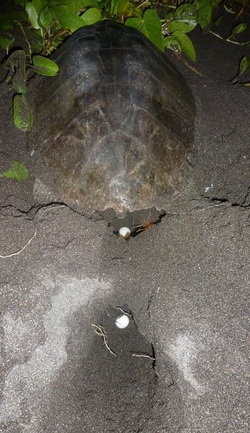
Sea turtles return to lay their eggs on the same beach where they were born beginning when they are 25 years old and continuing every year after this. Sea turtles are also know to travel up to 10,000 miles a year. While they are astonishing swimmers they are also capable of resting on the sea floor. But as land reptiles which adapted to the sea at about the same times the dinasaurs began to go extinct, the sea turtles needs to breathe air, at least once an hour.
Eleaza motions to us to come. Our turtle has already laid over eighty eggs, which have been scooped out of the nest through a second hole that the collectors have dug in the sand. The eggs are glistening white and seem to glow in the sand. As she lays her eggs, tears seem to pour down her face. Later I learn that sea turtles are known for crying, which is believed to allow them expel excess sea water.
I know that taking the eggs to the hatcheries will increase the chances for their survival. Still, I am sad thinking of the care the mother turtle takes in locating her nest and the arduous task of coming so far up on the sand. She closes the nest by raising herself up and stomping the sand mightily with her flippers. Then she returns to the sea, her journey only slightly less arduous as she moves down the bank of sand and catches an outbound wave.
Sea turtles live their lives as orphans. The mother will likely never see any of her babies, nor know if any live. The egg collectors tell us she had 92 eggs and they are happy because with the money from the hatchery they can buy food. The walk home is an eternity. The moon becomes an egg in my mind. It is midnight and I will be rising at 4:30 AM to watch the sunrise from the mangrove.
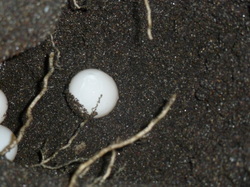
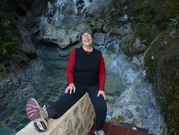
 RSS Feed
RSS Feed
